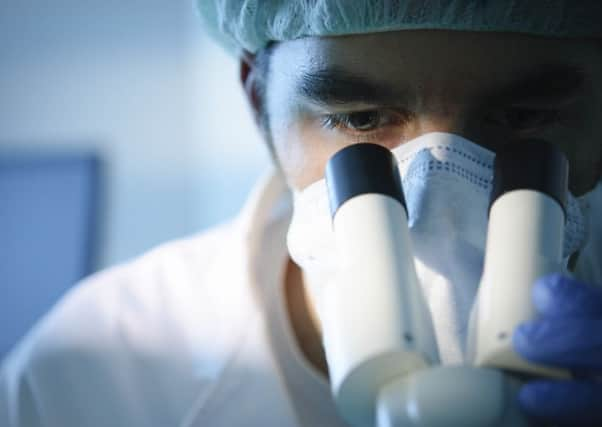Edinburgh scientists mark decade of nanotech research
This article contains affiliate links. We may earn a small commission on items purchased through this article, but that does not affect our editorial judgement.


The Institute of Occupational Medicine (IOM) opened its Safenano centre in 2006, tasked with “de-risking” the emerging industry in nanotechnology – the manipulation of matter on a molecular or even atomic scale, where distances are measured in a billionth of a meter.
Located at the Riccarton research park on the western fringes of Edinburgh, the Safenano facility provides industry, academia and government bodies with expertise and state-of-the-art laboratory facilities to address risk and safety issues over the technology, which can be used to make composite materials stronger and lighter, improve the effectiveness of food packaging and produce more efficient solar panels.
Advertisement
Hide AdAdvertisement
Hide AdDr Steve Hankin, Safenano’s director of operations who leads the team of scientists at the IOM, said: “Our mission has always been to provide the highest quality expertise to help nanotechnology emerge and develop on a safe and sustainable basis, maximising its commercial potential, through continuous development and improvement of our knowledge, equipment and practice.”
Over the past ten years, the IOM team have carried out a series of reviews for the UK government and agencies – including the Department for Environment, Food & Rural Affairs, Health & Safety Executive and Food Standards Agency – as well as the European Commission and the European Chemicals Agency.
The institute, which launched a Singapore facility in 2012, has also developed a range of scientific services to support manufacturing and research and development across industry and academia, spanning safe working practices, toxicology testing, risk assessment and training.
Despite the progress made during the past decade, Hankin said many stakeholders have yet to address the risks associated with the technology, which – given the minute scales at which it operates – could see nanoparticles absorbed into the body and interact with living cells.
According to the European Commission’s Scientific Committee on Emerging & Newly Identified Health Risks, inhaled nanoparticles can deposit in the lungs and then potentially move to other organs such as the brain, liver or spleen, although it has said that information on the “biological fate of nanoparticles including distribution, accumulation, metabolism, and organ specific toxicity is still minimal”.
Hankin said: “The landscape has changed substantially over the last ten years, but major challenges remain. The extensive worldwide research effort has resulted in the generation of a substantial quantity of scientific data on toxicology, exposure and risk.
“Progress has been made on important topics and there are now many examples of responsible industry practice addressing these risk issues in a proactive way. However, there are many other examples where government, academia and industry have still to fully recognise the extent of the risk issues and have not yet put in place the necessary steps to manage them effectively.”
He added: “This is crucial as new nanoscale forms of materials continue to be developed to bring technological advantage and benefit over older products.”
